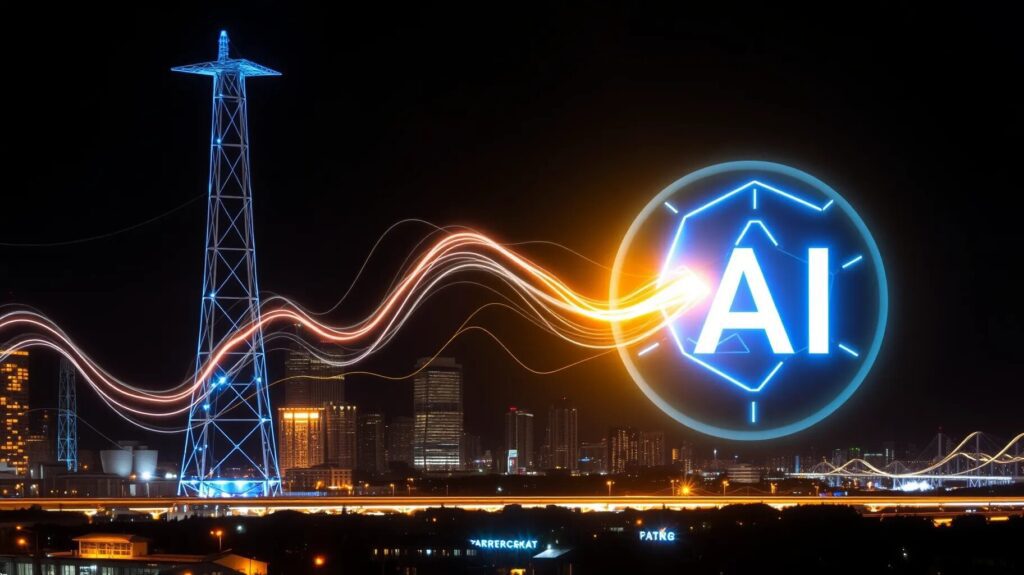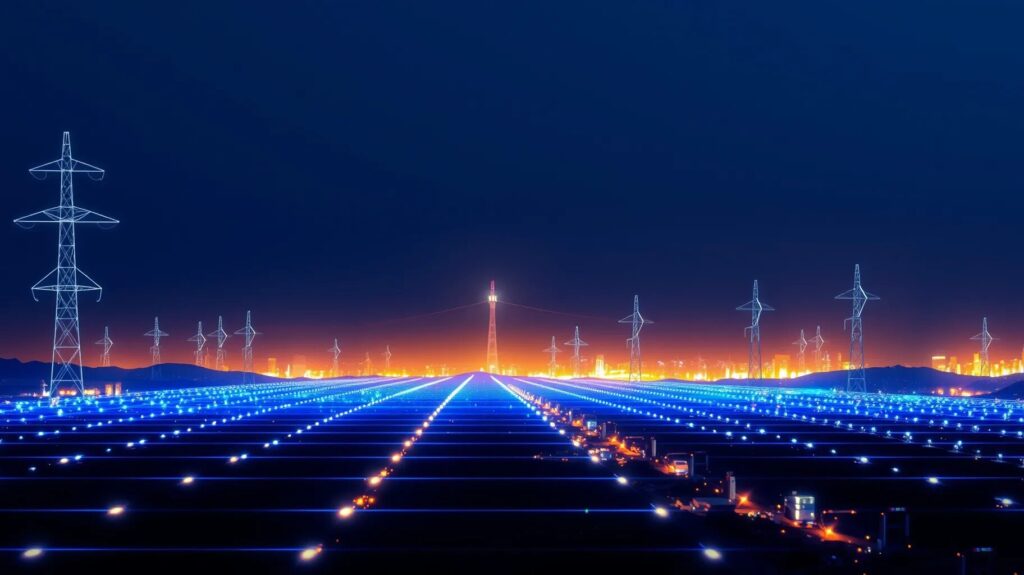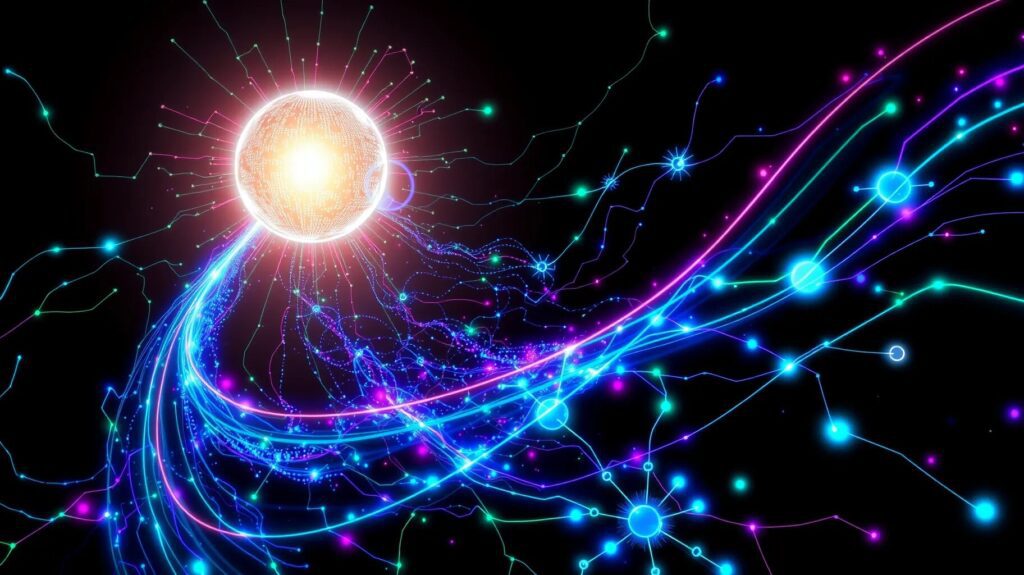
The Power Demands of Artificial Intelligence: An Introduction
As AI grows more advanced, one question looms large: How much power does AI really need?
Let’s dive into the power-hungry world of AI to understand its energy demands, and what it means for the future of technology and the planet.
The Energy Behind AI: Why Does It Need So Much Power?
At first glance, AI may seem like just another program running on a computer, but the truth is, AI requires enormous computational resources. The larger the model, the more power it consumes. AI’s dependency on massive data sets and complex algorithms means that it demands both processing power and energy in vast quantities.
- Training Large AI Models: A Power-Hungry ProcessTraining AI models, especially large ones like GPT-4 and similar language models, consumes huge amounts of electricity. These models are trained using powerful processors such as GPUs (Graphical Processing Units) and TPUs (Tensor Processing Units) which, in turn, require a significant amount of energy.
- Data Centers and AI: The Backbone of IntelligenceMuch of AI’s computation happens in data centers scattered around the globe. These data centers are the backbone of AI, hosting servers that handle massive workloads. They run around the clock, requiring not just electricity to power the servers, but also for cooling systems to prevent overheating.
- Energy Usage: Comparing AI to Other IndustriesAI’s energy consumption is often compared to industries like aviation and steel production. Surprisingly, training a single large AI model can produce as much CO2 emissions as five cars in their lifetime! As AI continues to grow, so will its impact on the environment.
- Real-Time AI: How Inference Consumes EnergyOnce AI models are trained, they still require power for inference—the process of making predictions based on what they’ve learned. This happens every time you ask Siri a question or receive a recommendation on Netflix. While inference uses less power than training, the cumulative energy use for millions of inferences adds up quickly.
- The Environmental Cost of AI: Sustainability ConcernsAs the demand for AI-powered applications grows, so do concerns about its environmental impact. AI’s energy demands contribute to the growing need for more sustainable computing solutions. Many companies are now looking for ways to reduce the carbon footprint associated with AI, leading to innovations in green AI.
Optimizing AI’s Power Consumption: Finding a Balance
AI’s immense power demands may seem overwhelming, but there are solutions on the horizon that can help balance efficiency with performance.
- Smarter Algorithms: Using Less to Achieve MoreOne way to reduce AI’s power consumption is by creating more efficient algorithms. Developers are working on refining algorithms to be less computationally expensive without sacrificing performance. Pruning techniques, for instance, can trim down the size of neural networks, requiring fewer resources.
- Hardware Innovations: Energy-Efficient ProcessorsJust as algorithms can be optimized, so can the hardware. Innovations in hardware design are producing more energy-efficient processors. Processors like Nvidia’s A100 are designed to be both powerful and energy-efficient, which means AI can run faster while consuming less energy.
- Cloud Computing: Maximizing Resource SharingCloud computing allows companies to share resources more effectively, reducing the total energy needed for AI tasks. By using cloud-based AI, companies avoid running large data centers of their own, reducing overall energy costs while improving scalability.
- AI and Renewable Energy: A Future Powered by Green SolutionsSome companies are combining AI development with renewable energy sources like solar and wind. By powering data centers with clean energy, AI’s environmental impact can be significantly reduced. Google, for instance, has pledged to run its data centers on 100% renewable energy by 2030, aiming to cut down on its AI’s carbon footprint.
- Edge Computing: A Game Changer for Power EfficiencyEdge computing allows AI computations to happen closer to where the data is being generated, such as on local devices instead of relying solely on large cloud servers. This reduces the energy needed for data transfer and cuts down on latency, making AI more efficient.
The Role of Quantum Computing in Reducing AI’s Power Consumption
One exciting avenue for reducing AI’s energy consumption is quantum computing. While still in its early stages, quantum computers have the potential to process complex algorithms exponentially faster than classical computers, using far less energy. This could revolutionize AI, offering more power-efficient training and inference processes.

- What is Quantum Computing?Unlike traditional computers, which use bits to process information in binary (0s and 1s), quantum computers use qubits, which can exist in multiple states simultaneously. This allows them to handle vast amounts of data much more efficiently, with far less power consumption.
- Quantum Computing and AI: A Perfect Match?AI’s need for processing massive datasets aligns well with quantum computing’s capabilities. If fully developed, quantum computers could run AI algorithms faster, with a fraction of the energy required by current supercomputers. This could drastically reduce both training time and power usage for large models.
- Challenges of Quantum AIThough promising, quantum computing faces challenges before it becomes mainstream. The technology is still experimental, and building reliable, scalable quantum computers requires overcoming significant hurdles. Cooling quantum processors to near absolute zero is an energy-intensive task, but researchers are optimistic about creating more practical quantum machines in the future.
- Current Developments in Quantum AICompanies like IBM and Google are investing heavily in quantum AI research. While we may still be a few years away from fully functional quantum AI applications, advancements in this field could make a significant impact on AI’s energy consumption in the long run.
- Can Quantum Computing Make AI Greener?Yes, if harnessed correctly. Quantum computing has the potential to revolutionize AI by making it greener and more power-efficient. It could open doors to previously unattainable AI applications without the environmental costs currently associated with power-hungry systems.
Reducing AI’s Energy Impact Through Collaboration
Addressing AI’s energy consumption requires more than just technological advancements—it calls for collaborative efforts across industries, governments, and institutions. By working together, these entities can create more sustainable AI solutions.
- Industry Collaboration for Energy-Efficient AIMany companies are now part of collaborative initiatives to reduce AI’s environmental footprint. For instance, the Partnership on AI brings together tech giants like Google, Facebook, and Microsoft, along with academic institutions, to work on improving AI’s sustainability. They focus on creating shared standards for energy efficiency and responsible AI development.
- Government Policies Supporting Sustainable AIGovernments also play a crucial role in regulating AI’s energy use. Policies that promote green technology and the use of renewable energy can significantly influence how AI systems are powered. For example, the European Union has implemented strict guidelines for data centers, requiring them to increase energy efficiency and reduce their carbon footprint.
- Academia’s Role in Energy-Efficient AI ResearchUniversities and research institutions are at the forefront of creating energy-efficient AI models. Through public funding and partnerships with private companies, they develop cutting-edge solutions that aim to reduce the energy demands of AI systems. By focusing on sustainable AI research, academia is helping shape a more eco-friendly future for artificial intelligence.
- AI for Energy Efficiency: A Two-Way StreetInterestingly, AI itself can be used to improve energy efficiency across industries. AI-powered systems can optimize energy grids, reduce waste in manufacturing, and enhance the performance of renewable energy sources. In this way, AI isn’t just an energy consumer—it can also be a powerful tool for creating a more sustainable future.
- Public Awareness and the Push for Green AIAs the world becomes more aware of AI’s environmental impact, there’s a growing demand for more sustainable solutions. Consumers and businesses alike are pushing for greener technologies, including AI. This pressure is leading companies to prioritize energy efficiency in their AI systems, ensuring that they’re not only powerful but also eco-friendly.
AI and the Circular Economy: Recycling Computational Resources
One innovative way to reduce AI’s energy consumption is by incorporating it into the circular economy—a system designed to minimize waste by reusing and recycling resources.
- What is the Circular Economy?The circular economy is an economic model that focuses on minimizing waste and making the most of resources by keeping products, materials, and energy in use for as long as possible. In the context of AI, this means finding ways to reuse computational power and reduce the need for new energy-intensive resources.
- Reusing AI Models: A Sustainable ApproachInstead of training new models from scratch, AI developers can reuse pre-trained models. By building on existing models, they reduce the need for energy-intensive training processes. This is already a common practice in transfer learning, where a model trained on one task is adapted for a different, but related, task—saving time and energy.
- Recycling Data and Resources in AIAnother way to incorporate AI into the circular economy is by recycling data. Instead of constantly generating new datasets, AI systems can make use of existing data, cleaning and refining it for new purposes. This reduces the need for data-intensive processes, lowering overall energy consumption.
- Maximizing Hardware Lifespan for AI EfficiencyIn a circular economy, hardware plays a significant role. AI requires specialized hardware, but frequent updates and replacements lead to significant electronic waste. By designing more durable and recyclable hardware, companies can reduce the environmental cost associated with AI’s energy consumption.
- AI’s Role in Creating a Circular EconomyAI itself can help promote the circular economy by optimizing resource allocation and minimizing waste across various industries. AI-powered systems can track the lifecycle of products, predict when materials can be reused, and create more efficient recycling processes. This symbiotic relationship between AI and the circular economy holds promise for a more sustainable future.
The Massive Power Consumption of AI Data Centers

Data centers play a central role in AI’s power consumption. These vast facilities house the servers and hardware that process the enormous amounts of data AI requires. As AI becomes more integrated into our daily lives, the energy consumption of data centers has skyrocketed—and it’s only going to increase as demand grows.
- Five-Gigawatt Data Centers: The Future of AI Power UseAccording to Bloomberg, discussions are underway about data centers in several U.S. states that could consume five gigawatts of electricity per year each. To put this into perspective, that’s the equivalent of the power produced by five nuclear reactors, enough to supply around three million households annually. These figures highlight just how energy-hungry AI and its infrastructure have become.
- Why Do Data Centers Use So Much Power?AI-driven data centers require constant power for two key functions: computing and cooling. The servers inside data centers run complex AI algorithms that generate tremendous amounts of heat, so they need robust cooling systems to prevent overheating. This combination of high-performance computing and round-the-clock cooling is what drives such high levels of power consumption.
- The Environmental Impact of Power-Hungry Data CentersThese five-gigawatt data centers not only represent a strain on local power grids but also raise concerns about their environmental impact. With AI’s rapid expansion, the energy required to sustain these systems could lead to increased carbon emissions, unless efforts are made to power them with renewable energy sources. The idea of data centers consuming as much energy as nuclear reactors is a wake-up call for the tech industry to consider sustainable alternatives.
- The Challenge of Scaling AI Infrastructure ResponsiblyAs AI models get larger and more sophisticated, so too must the infrastructure that supports them. But scaling up comes with significant challenges—particularly the balance between energy demands and sustainability. To maintain the growth of AI without compromising the environment, tech companies will need to focus on both efficiency improvements and investing in clean energy to power their data centers.
- Local Economies and Energy Grids: The Data Center DilemmaThese massive data centers also pose challenges to local economies and power grids. The sheer volume of electricity needed can strain the grid, especially in regions where renewable energy infrastructure is still developing. Communities around data centers may experience higher electricity prices or increased pressure on their energy resources, leading to debates about how to manage this growing demand.
AI and Power Management: Balancing Growth and Sustainability
To keep up with AI’s accelerating development while minimizing its environmental impact, companies and governments are working on solutions to make data centers more energy-efficient. Let’s take a look at some of the key strategies being explored to manage AI’s power needs responsibly.
- Green Energy Solutions for Data CentersMany tech companies are turning to renewable energy sources to power their data centers. For instance, companies like Amazon Web Services, Google, and Microsoft have committed to running their data centers on 100% renewable energy within the next decade. This means using solar, wind, and hydropower to meet the energy demands of their AI operations.
- Improving Data Center Design for Energy EfficiencyAdvances in data center design are helping to reduce their overall power consumption. Techniques like liquid cooling systems, which are more efficient than traditional air conditioning, and modular designs that optimize space and airflow, are already making data centers less energy-intensive. These innovations can significantly cut down the cooling power needed, which is one of the largest contributors to energy use.
- Dynamic Power Management: AI Helping AIIronically, AI itself is being used to make data centers more power-efficient. AI algorithms can monitor server loads, adjust energy use in real time, and predict the most efficient ways to distribute resources. By using machine learning to manage data center operations, companies can reduce unnecessary power consumption and lower their carbon footprints.
- Locating Data Centers in Cooler ClimatesAnother emerging trend is building data centers in cooler climates to naturally reduce the need for energy-intensive cooling systems. Countries like Iceland and Finland are becoming popular locations for new data centers, where the naturally cold air can be used to keep servers cool, significantly lowering energy use.
- Off-Grid Data Centers: A Bold New ApproachSome companies are even experimenting with off-grid data centers, powered entirely by on-site renewable energy sources. By installing solar panels or wind turbines directly at the data center location, these facilities could operate independently of traditional energy grids, reducing their impact on local infrastructure while ensuring a steady supply of clean energy.
The Future of AI Energy: Is It Sustainable?
Looking ahead, the power demands of AI will continue to grow, and with them, the pressure on energy resources. However, with innovative strategies like renewable energy, energy-efficient hardware, and AI-managed infrastructure, there’s hope that AI can continue to thrive without overburdening our planet.
The question is not just how much power AI will need, but how smart we’ll be in managing it.
References
Bloomberg News. “Five-Gigawatt Data Centers in U.S. States Could Power Three Million Households.” Bloomberg.com. Accessed October 2024.
Google Sustainability. “Our Commitment to 24/7 Carbon-Free Energy by 2030.” Google Sustainability. https://sustainability.google/. Accessed October 2024.
Partnership on AI. “AI and Climate Change: Addressing the Environmental Impact of AI.” https://www.partnershiponai.org/. Accessed October 2024.
Nvidia. “NVIDIA Data Center GPUs for Energy-Efficient AI Workloads.” Nvidia.com. Accessed October 2024.
Circular Economy in AI. The Role of Artificial Intelligence in Enabling a Circular Economy.” ScienceDirect.com. Accessed October 2024.
Microsoft. “Using AI to Build a Sustainable Energy Future.” Microsoft.com. Accessed October 2024.
U.S. Department of Energy. “Data Center Energy Efficiency Best Practices.” Energy.gov. Accessed October 2024.
IBM. “Quantum Computing for AI: Reducing Energy Consumption in Complex Algorithms.” IBM.com. Accessed October 2024.
